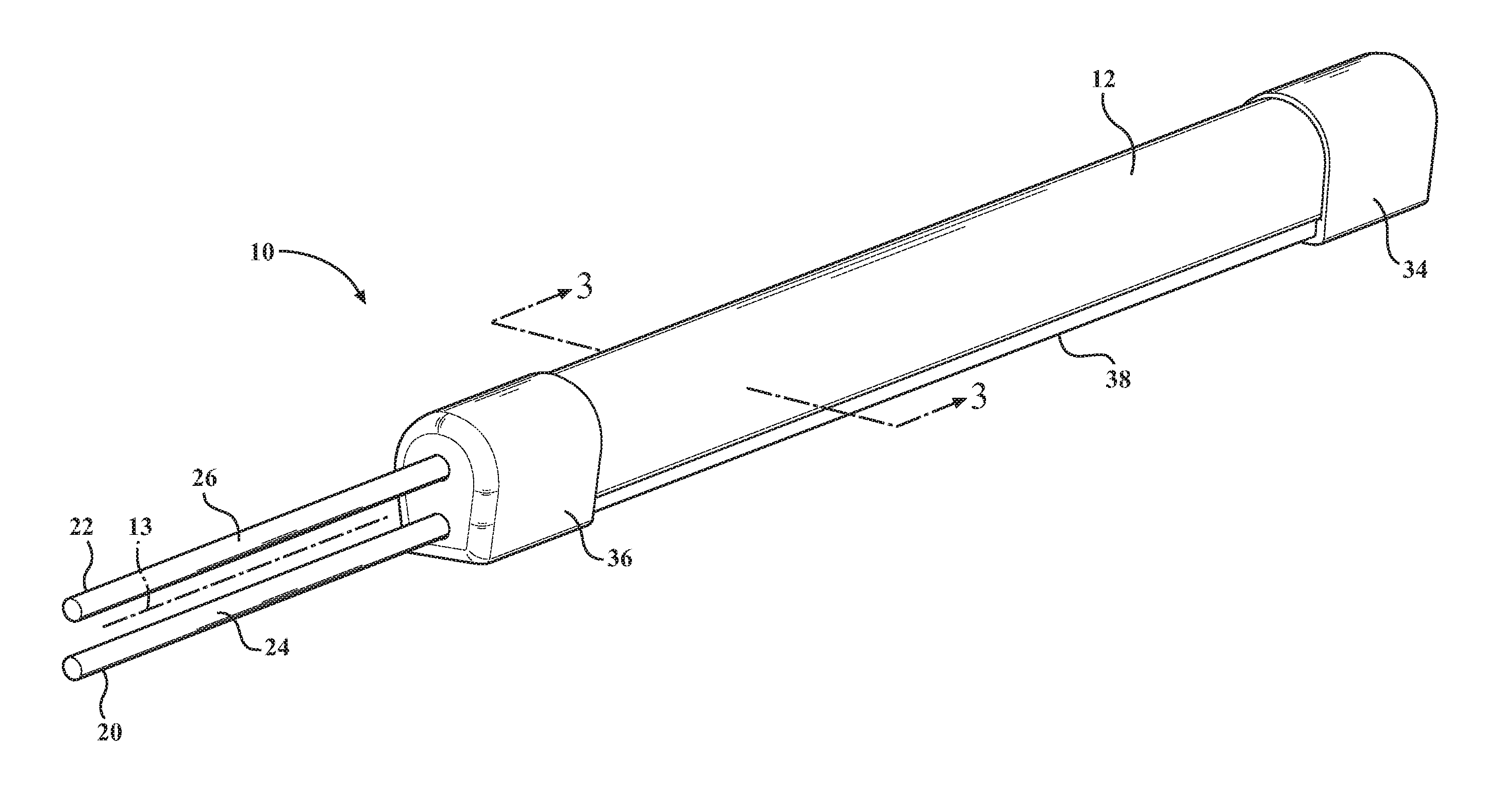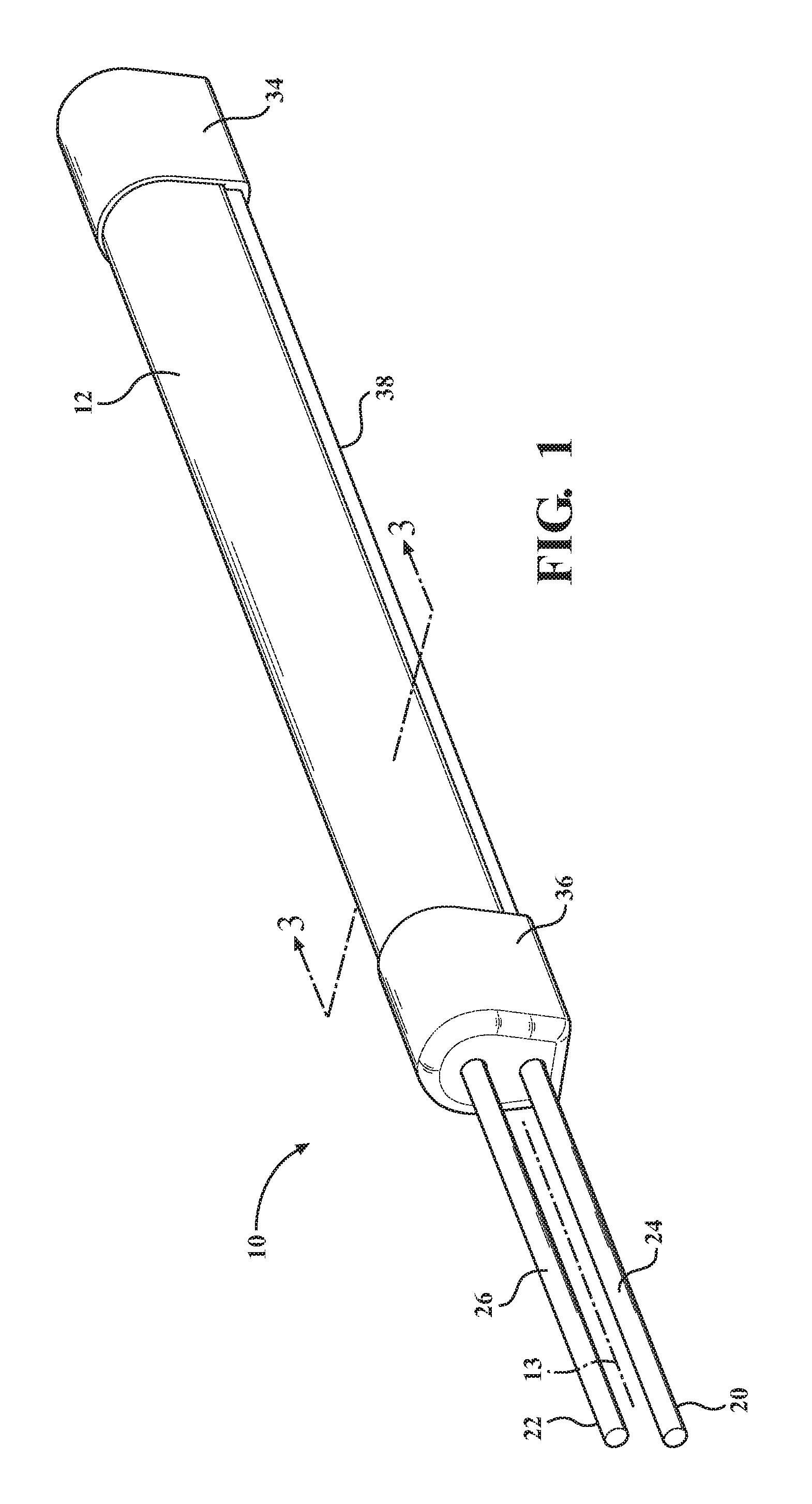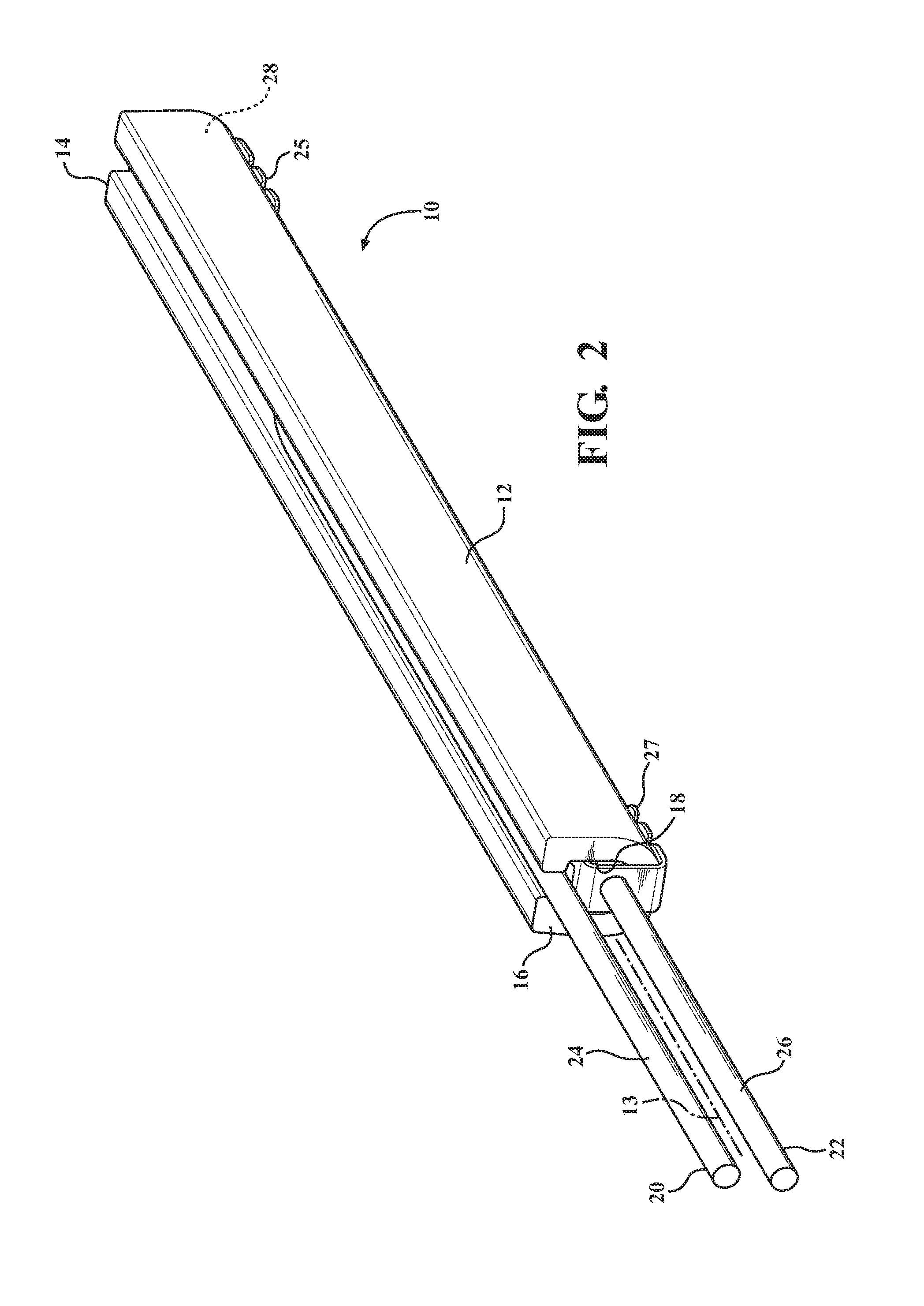Variable resistance conductive rubber sensor and method of detecting an object/human touch therewith
a technology of conductive rubber and sensors, applied in the field of sensors, can solve the problems of compromising affecting the operation of hall effect sensors, and affecting the effectiveness of sensors, and achieve the effect of increasing electrical resistan
- Summary
- Abstract
- Description
- Claims
- Application Information
AI Technical Summary
Benefits of technology
Problems solved by technology
Method used
Image
Examples
Embodiment Construction
[0040]For purposes of descriptive clarity, the present disclosure is described herein in the context of one or more specific vehicular applications, namely powered windows. However, upon reading the following detailed description in conjunction with the appended drawings, it will be clear that the inventive concepts of the present disclosure can be applied to numerous other systems and applications, such as, for example, power lift gates, power roof panels, deck-lids, trim panel movement detection; exterior door handle activation pressure detection; non-planar switch applications, including occupant detection on a vehicle seat, for example.
[0041]Referring now in more details to the drawings, FIGS. 1-5 illustrate an embodiment of a variable resistance conductive rubber sensor assembly, and referred to hereafter simply as sensor 10, which is also actively functional as a switch, in accordance with one aspect of the invention. The sensor 10 has a sensor body 12 constructed of a conduct...
PUM
| Property | Measurement | Unit |
|---|---|---|
| current | aaaaa | aaaaa |
| frequency | aaaaa | aaaaa |
| resistance | aaaaa | aaaaa |
Abstract
Description
Claims
Application Information
 Login to View More
Login to View More - R&D
- Intellectual Property
- Life Sciences
- Materials
- Tech Scout
- Unparalleled Data Quality
- Higher Quality Content
- 60% Fewer Hallucinations
Browse by: Latest US Patents, China's latest patents, Technical Efficacy Thesaurus, Application Domain, Technology Topic, Popular Technical Reports.
© 2025 PatSnap. All rights reserved.Legal|Privacy policy|Modern Slavery Act Transparency Statement|Sitemap|About US| Contact US: help@patsnap.com



